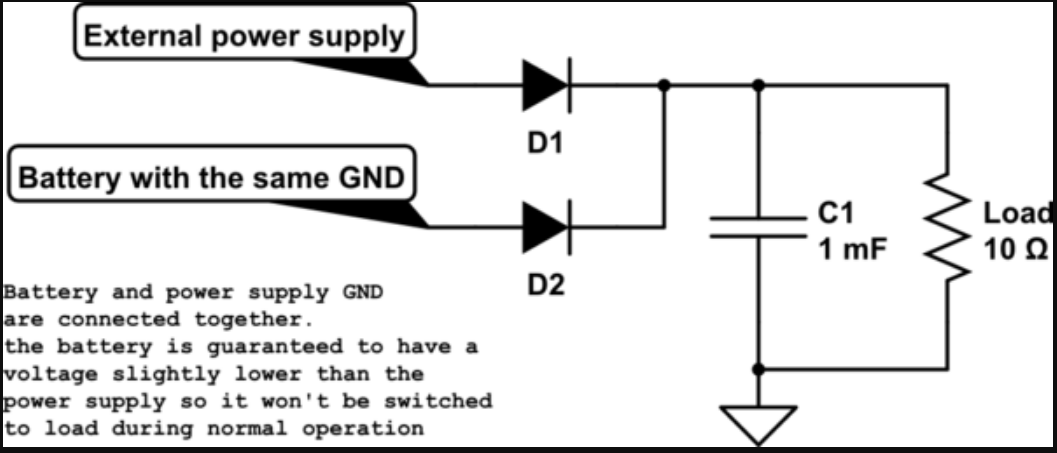I've got a question about this very simple 2 diode UPS circuit, using a non-rechargeable battery. Basically, the battery takes over the circuit when the external mains power supply is removed (provided there's enough of a voltage difference between the 2)
If the mains power is never lost over a few years, there's obviously still a small amount of leakage current that's drained by the battery from being attached to the circuit. Is this a significant amount of current consumed, or is it so minor that it's not much different to the natural drain that batteries get when they're not powering anything and collecting dust? Is there any simple wattage calculation I can make for this drain when attached to the circuit?

